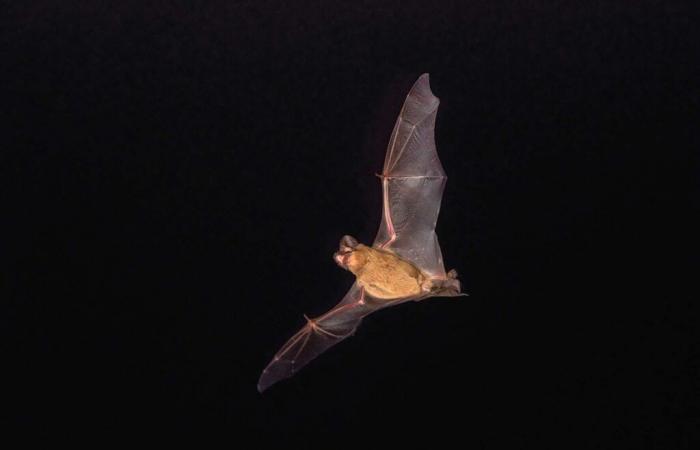When we talk about speed in the animal kingdom, one name is often immediately obvious: that of the cheetah. True rocketrocket From the African savannahs, this agile and elegant predator can reach speeds of 110 km/h in a flash. And in the airsairsthe peregrine falcon’s dive makes it the fastest diving animal in the world, capable of approaching 400 km/h!
But there is a lesser known animal, which nevertheless holds an impressive title: that of the fastest mammal on the Planet. This animal is the Brazilian mastiff, Tadarida brasiliensisa small American bat.
Unrivaled horizontal speed
The Brazilian mastiff is a bat of modest size, measuring between 10 and 12 centimeters and weighing just 13 grams. It is found on the American continent, from Central America to the southern United States.
A 2016 study published in the journal Royal Society Open Scienceled by the University of Tennessee and the Institute Max PlanckMax Planckdiscovered that the Brazilian mastiff is capable of flying at a horizontal speed of 160 km/h. To put this into perspective, swifts and peregrine falcons, renowned for their speedspeedreach speeds of 110 km/h in horizontal flight.
To measure this speed, the researchers equipped the bats with radio transmitters, attached with surgical glue. These devices make it possible to precisely follow their trajectories and measure their speed.
The secrets of their speed
What allows this small mammal to defy the laws of nature? physiquephysique and going at such a speed? Everything lies in his morphologymorphology. With an ultra-aerodynamic body and exceptionally long wings for its size, the mastiff is a true model of flight performance.
But every scientific discovery has its detractors. Some researchers, such as the Swedish Anders Hedenström, have suggested that external factors could have influenced the results. However, the authors of the study defended the robustness of their results by insisting on the constancy of the weather conditions during the observations. “ External factors such as terrain and tailwinds cannot explain these results, as they had no impact on maximum speeds », said Dina Dechmann, of the Max Planck Institute.
As further evidence, the study’s lead author, Gary McCracken, one of the world’s leading bat experts, said Wired that « when they have a headwind, they fly faster. When they have a tailwind, they are slowed down ».
In the end, if the cheetahcheetah remains undoubtedly the fastest land animal, this small winged mammal, the fastest in the world, is a speed champion who well deserves its place among the most fascinating animals on our Planet.






